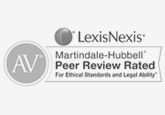Compensation for Property Damage in U.S. Civil Courts
In the United States, the legal framework governing compensation for property damage is rooted in the principles of civil law. This legal process enables individuals and entities to seek redress for losses incurred due to the damage or destruction of property. The following text elucidates the key aspects of pursuing compensation for property damage within the U.S. civil court system, including the legal basis, procedural steps, and considerations for claimants.
Legal Basis for Property Damage Claims
The right to seek compensation for property damage in the U.S. is grounded in tort law. Tort law encompasses a range of civil wrongs, including negligence, intentional harm, and strict liability. When an individual or entity causes damage to another’s property, they may be held liable under these legal theories. The primary objective of tort law is to restore the injured party to the position they were in prior to the damage, typically through monetary compensation.
Procedural Steps in Filing a Claim
1. Initiation of the Claim: The process begins with the claimant, or plaintiff, filing a complaint in the appropriate civil court. The complaint must detail the nature of the damage, the circumstances under which it occurred, and the basis for holding the defendant liable.
2. Service of Process: The defendant must be formally notified of the lawsuit through a process known as service of process. This ensures that the defendant is aware of the legal action and has an opportunity to respond.
3. Discovery Phase: Both parties engage in discovery, a pre-trial phase where they exchange information and gather evidence pertinent to the case. This may include depositions, interrogatories, and requests for documents.
4. Settlement Negotiations: Often, parties may attempt to resolve the dispute through settlement negotiations to avoid the time, expense, and uncertainty of a trial. Settlements can be reached at any stage of the litigation process.
5. Trial: If a settlement is not achieved, the case proceeds to trial. During the trial, both parties present their evidence and arguments to a judge or jury. The judge or jury then determines liability and the appropriate amount of compensation.
Considerations for Claimants
When pursuing a property damage claim, several critical considerations must be taken into account:
– Statute of Limitations: Claimants must be mindful of the statute of limitations, which sets a deadline for filing a lawsuit. This period varies by state and the nature of the claim but generally ranges from two to six years.
– Proving Liability: The burden of proof lies with the claimant, who must demonstrate that the defendant’s actions were the proximate cause of the property damage. This often requires expert testimony and substantial evidence.
– Calculating Damages: Compensation for property damage may include the cost of repairs, replacement value, loss of use, and, in some cases, diminution in value. Claimants should meticulously document all expenses and losses related to the damage.
– Insurance Considerations: Many property damage claims involve insurance companies. Claimants should review their policies to understand coverage limits, exclusions, and the process for filing an insurance claim. Coordination between legal and insurance proceedings is often necessary.
In conclusion, seeking compensation for property damage in U.S. civil courts is a multifaceted process requiring a thorough understanding of legal principles, procedural requirements, and strategic considerations. By adhering to these guidelines, claimants can effectively navigate the legal system to secure the compensation they are entitled to.





